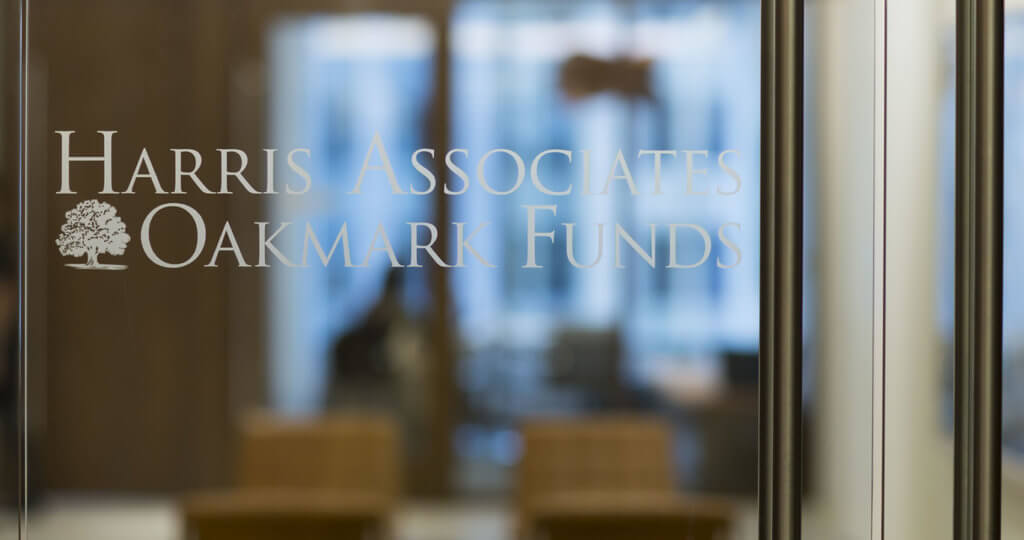Oakmark Fund - Investor Class
Average Annual Total Returns 12/31/14
Since Inception 08/05/91 13.27%
10-year 8.78%
5-year 16.17%
1-year 11.51%
3-month 3.64%
Gross Expense Ratio as of 09/30/14 was 0.87%
Past performance is no guarantee of future results. The performance data quoted represents past performance. Current performance may be lower or higher than the performance data quoted. The investment return and principal value vary so that an investor’s shares when redeemed may be worth more or less than the original cost. To obtain the most recent month-end performance data, view it here.
The Oakmark Fund increased 4% during the fourth quarter of 2014, bringing the gain for the calendar year to 12%. These results lagged slightly behind the S&P 500, which was up 5% for the quarter and up 14% for the calendar year. Although the Fund slightly trailed the strong performance of the S&P 500 for the quarter and the year, we are pleased with its double-digit gain for the year and strong cumulative results over the past three years.
As we have written in the past, we believe the financial and information technology sectors are among the most attractive, and investments in these areas represent over half of the Fund’s equity holdings. These sectors were among the top three contributors for Fund performance for the calendar year. Our great team of research analysts continues to find attractive new investment ideas, and over the past 12 months we added 14 new names to the portfolio. We continue to look for companies that have strong balance sheets and generate a lot of free cash flow, that have management teams that invest capital to maximize per-share value and that sell at a discount to our estimate of fair value. During the quarter, we added new positions in Chesapeake Energy and General Electric (see below). We eliminated positions in Baxter International, Cenovus Energy, Covidien and Kohl’s.
Our biggest contributing sectors for the fourth quarter were information technology and financials, and with a substantial decline in oil prices during the quarter, energy was our worst performing sector. As with all of our holdings, we take a long-term view of our investments in the energy sector, so while stock prices have fallen precipitously in reaction to higher volatility in spot oil prices, we remain focused on less volatile long-term oil prices, which are set more by supply and demand fundamentals than by financial speculation. In the information technology sector, it is interesting to note that “old-line” technology companies with strong cash flow and re-invigorated cloud offerings made a positive comeback in 2014. Intel, Apple, Microsoft and Oracle were among the Oakmark Fund’s top 12 contributors for the calendar year, gaining on average 33%. The Fund’s highest contributors for the quarter were Visa, MasterCard and Oracle, and our worst performers were Apache, Halliburton and Sanofi.
Chesapeake Energy (CHK – $19.57)
Chesapeake Energy is one of the largest oil and natural gas producers in the United States. The company has a storied history. Since its founding in 1989, it grew rapidly by acquiring acreage positions across North America’s largest resource plays. In our view, this growth left the company flush with high-quality assets, but financially overextended and operationally inefficient. During the past two years, the board of directors and the executive management team were replaced with new, shareholder-oriented leaders. This team began overhauling Chesapeake quickly by reducing leverage, simplifying the company’s financial structure and refocusing capital allocation on the highest return uses. In the past 18 months, Chesapeake has managed to spin off its non-core oilfield services business, sell billions of dollars of assets to reduce leverage, cut its capital spending budget by two-thirds and reduce general and administrative expenses by half. We believe these actions show that management’s focus has shifted away from acreage growth and toward maximizing shareholder returns. Chesapeake’s shares are trading at less than the company’s book value and at just 11x earnings per share. We see this as a bargain price for such high quality oil and gas assets run by what we believe is a strong, shareholder-friendly management team.
General Electric (GE – $25.27)
General Electric is a company with businesses we have always admired, but we have questioned management’s focus on returns when making capital allocation decisions. However, the appointment of a new CFO in mid-2013 ushered in significant changes. Since then, GE has, in our view, acquired assets cheaply (Alstom) and sold assets at good prices (Synchrony and its appliances division). In 2015 the company plans to totally revamp its variable compensation plan for thousands of employees, emphasizing factors that drive return on invested capital, which should boost future results. We believe there is substantial opportunity to improve gross margins, and the stock trades for just under a market multiple on 2016 earnings. Some investors may have a stale opinion of GE after the past 15 years of persistent underperformance, but we believe it’s a good investment at the current price.
As of 12/31/14 Chesapeake Energy represented 1.2%, General Electric 1.5%, Baxter International 0%, Cenovus Energy 0%, Covidien 0%, Kohl’s 0%, Intel 2.2%, Apple 1.8%, Microsoft 1.6%, Oracle 2.4%, Visa 2.2%, MasterCard 2.5%, Apache 2.4%, Halliburton 1.1% and Sanofi 1.5% of the Oakmark Fund’s total net assets. Portfolio holdings are subject to change without notice and are not intended as recommendations of individual stocks.
Click here to access the full list of holdings for The Oakmark Fund as of the most recent quarter-end.
The S&P 500 Total Return Index is a market capitalization-weighted index of 500 large-capitalization stocks commonly used to represent the U.S. equity market. All returns reflect reinvested dividends and capital gains distributions. This index is unmanaged and investors cannot invest directly in this index.
ROIC refers to Return on Invested Capital and is a calculation used to assess a company’s efficiency at allocating the capital under its control to profitable investments.
The Oakmark Fund’s portfolio tends to be invested in a relatively small number of stocks. As a result, the appreciation or depreciation of any one security held by the Fund will have a greater impact on the Fund’s net asset value than it would if the Fund invested in a larger number of securities. Although that strategy has the potential to generate attractive returns over time, it also increases the Fund’s volatility.
The discussion of the Fund’s investments and investment strategy (including current investment themes, the portfolio managers’ research and investment process, and portfolio characteristics) represents the Fund’s investments and the views of the portfolio managers and Harris Associates L.P., the Fund’s investment adviser, at the time of this letter, and are subject to change without notice.




